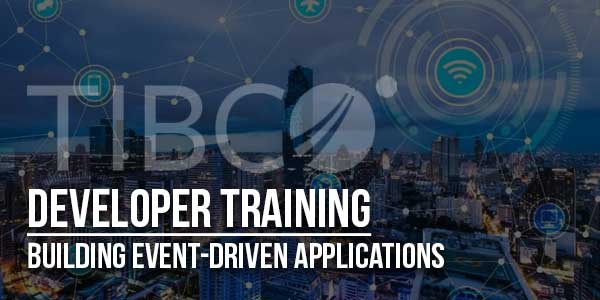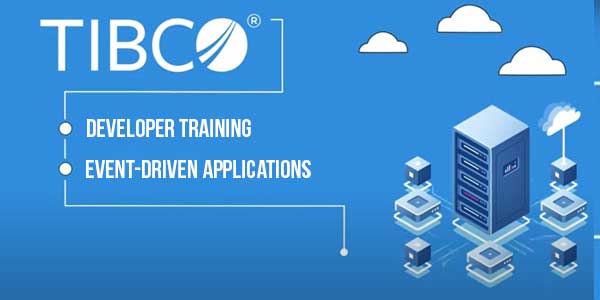
TIBCO BusinessWorks is a powerful integration platform that enables businesses to automate and streamline their operations. With its user-friendly interface and extensive range of connectors, BusinessWorks allows users to quickly design, deploy, and manage event-driven applications. By leveraging the power of TIBCO’s industry-leading Enterprise Service Bus (ESB) technology, BusinessWorks makes it easy for developers to integrate disparate systems and applications across an organization.
One of the key features of TIBCO BusinessWorks is its ability to support multiple integration patterns. Whether it’s a simple point-to-point integration or a complex event-driven architecture, BusinessWorks provides a wide range of options for designing scalable and robust solutions. With its drag-and-drop visual development environment, developers can easily create integration processes by simply dragging components onto a canvas and connecting them with appropriate links.
Furthermore, TIBCO BusinessWorks also offers advanced capabilities such as message transformation, data routing, error handling, and monitoring. This allows developers to build highly resilient applications that can handle failures gracefully while ensuring reliable data processing. Additionally, BusinessWorks supports industry-standard protocols like SOAP and RESTful web services, making it compatible with a wide array of technologies.
Table of Contents
TIBCO BW Basics:
TIBCO BusinessWorks (BW) is a powerful integration platform that allows developers to build event-driven applications with ease. With its intuitive drag-and-drop interface and extensive library of connectors, TIBCO BW simplifies the process of connecting different systems and applications, making it an essential tool for any developer working on integration projects.
One of the fundamental concepts in TIBCO BW is the notion of events. Events are at the core of event-driven architectures, where systems communicate through the exchange of messages. In TIBCO BW, events can be generated by various sources such as user interactions or system triggers, and they can trigger actions or workflows within an application. By leveraging the power of events, developers can create applications that respond to real-time changes in data or business conditions.
Furthermore, TIBCO BW offers a range of features to ensure reliability and scalability in event-driven applications. It provides seamless integration with messaging systems like Apache Kafka and ActiveMQ, allowing for efficient communication between components. Additionally, TIBCO BW supports clustering and load balancing, enabling developers to build high-performance applications that can handle large volumes of events without compromising on performance.

Advanced Process Design:
Advanced Process Design is an essential skill for Tibco BE developers looking to create efficient and scalable event-driven applications. It goes beyond the basic process design and delves into complex scenarios where multiple events, processes, and rules are intertwined. This advanced level of process design allows developers to build sophisticated workflows that can handle real-time data processing and decision-making.
One key aspect of advanced process design is the ability to manage event correlation and aggregation. In event-driven applications, events can occur in rapid succession, making it critical to accurately correlate related events and aggregate their data. Advanced process design techniques enable developers to define rules that determine how events should be correlated, using various attributes such as timestamps or specific data fields. By effectively managing event correlation and aggregation, developers can ensure accurate analysis of data streams, leading to more informed decision-making.
Another important aspect of advanced process design is handling exceptions and managing error flows within a workflow. In complex systems with intricate processes, there are bound to be scenarios where errors occur or unexpected conditions arise. Advanced process design empowers developers to anticipate these situations and define error handling mechanisms accordingly. By incorporating error flows into their workflows, developers can ensure seamless recovery from errors or deviations from the expected path without disrupting the overall system functionality.
Communication And Connectivity:
Communication and connectivity are at the core of building event-driven applications. In today’s fast-paced digital landscape, businesses need to be able to quickly respond to changing customer demands and market conditions. This requires real-time data processing and seamless integration between various systems and applications.
With event-driven architecture, communication becomes a crucial aspect of application development. Events act as triggers for different components within a system, allowing them to communicate with each other in real-time. This enables developers to build highly flexible and responsive applications that can react instantly to user actions or external events. By leveraging event-driven communication patterns, businesses can enhance their agility and responsiveness, ultimately leading to improved customer satisfaction.
Connectivity is equally important in the context of building event-driven applications. The ability to connect with various data sources, APIs, services, or even external systems is essential for gathering critical information in real-time. With the increasing complexity of technology ecosystems today, it’s vital for developers to have the tools and knowledge required for seamless integration between diverse components.
Conclusion:
In conclusion, the TIBCO BusinessWorks (BW) training program equips participants with a comprehensive understanding of integration concepts and the practical skills needed to design, develop, deploy, and manage integration solutions using TIBCO BW. Throughout the training journey, participants have delved into the fundamentals of process design, communication protocols, error handling, and troubleshooting. They’ve gained hands-on experience with various connectors, mastered the art of creating efficient and scalable integration solutions, and explored real-world case studies to apply their knowledge in practical scenarios.

 About the Author:
About the Author:
















Be the first to write a comment.